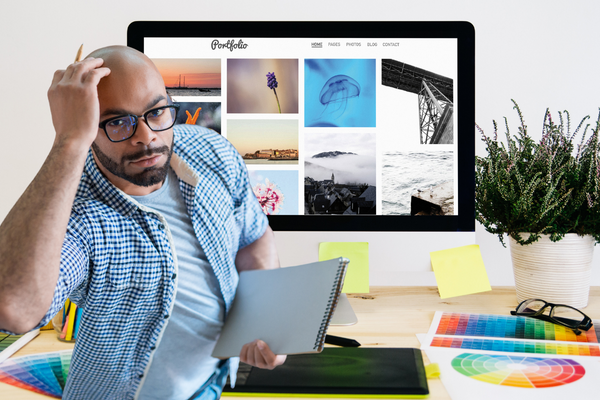As a creative, having a portfolio of your work can easily be overlooked – especially now that we have LinkedIn, Twitter, Facebook, Instagram and YouTube to host every single bit of content we’ve ever put out into the world.
But even though your stuff might exist online, it’s essential to gather the ‘greatest hits’ in one place – that way, when a potential client or employer wants to review what you do, they can do so with ease.
Portfolios used to mean carrying around a massive folder of work with you to meetings and interviews, and while in some cases it still does (hello painters!), the most used method now is the digital portfolio. Your website should be your project showcase, resume and business card all in one.
So, let’s assume that you’ve got great photos, videos or sound files of your creative content. You just need somewhere to put them. Here’s a step-by-step guide to creating your online creative portfolio.
Step one: draft a website
There are heaps of options out there for website building, and the best one for you will depend on the kind of work you create. SquareSpace and Wix are some of the best for content that has a striking visual element (art, design, film, handicrafts), while WordPress is great for written works.
Whatever you pick, you want to be sure it can host a number of different media types, especially if your work is in multimedia. All of the website builders mentioned here can embed images, videos, and sound files easily, and you won’t have to learn code.
Read: How to survive networking (without screaming into the canapés)
Now is the time to think about how many webpages you’ll have. Ideally, a homepage that has the portfolio on it is best, followed by an ‘About’ page and a ‘Contact’ page. You can start drafting up your bio for the about page, and ensure you have current links to all your work.
TIP: If you don’t have a professional email address already, create one that’s simple (i.e. just your name and/or what you do) and list it on the website. Contact forms with no listed email are not recommended.

Step two: add content
Pick your best creative examples to showcase on the website. When doing this, think about the work that displays your prowess as well as your variety. What sort of work do you want to attract? Make sure relevant examples are shown front and centre.
An even number of pieces is key, as the webpage will usually display them in a grid format. Make sure your thumbnail photos are high-resolution and that each project is clearly labelled. The thumbnails and titles should both hyperlink to a separate page that describes the project in more detail. Here, you can embed larger images, videos and/or sound files.
Read: How to start and maintain an inspiration board
On each project’s page, you want to have a paragraph or two that gives clear information on what the content is, and why you’re proud of it. You should also be utilising SEO terms so that your site is easily found on Google. Word of mouth recommendation is great but an employer finding you through an independent search may be even better!
TIP: Test your website as though you are a potential employer – Google some terms that you’ve used and see if it comes up; and ensure images load, and videos & sounds play properly.
Step three: register the domain
Not a super necessary step, since the web builder you use will assign one anyway, but ‘BrandinesPortfolio dot com’ is easier to remember than ‘websitemaker dot com slash brandine’s portfolio 2431’.
Take the same approach to your domain name as you did to your professional email, and keep it simple. My domain name is ‘SilviReports.com’, because my name is Silvi and I report on things. People will be likely to remember that!
This is the only part of the process that should cost you money – and it can be done very cheaply, so shop around before you hit purchase.

Step four: hit publish
After previewing your site a few times to make sure everything works and looks great, it’s time to publish it!
There’s really nothing complicated to this part, but you might wanna send around your URL to a few friends to test that it’s working.
TIP: Test the URL on different browsers, as well as phones and desktop computers to see how it displays.
Step five: shop it around
It’s time to let your hard work shine! Make sure to update all your social media profiles with your new website URL, and consider using a URL shortener if you’re tweeting about it.
Add it to LinkedIn, Instagram – wherever you are digitally visible, and make sure it’s also in your email signature and resume file.
In our networking advice article, we mentioned carrying around a QR code with you that links to your website, as a replacement for the traditional business card. I really do recommend that you set this up as soon as your website is ready to go – unless, that is, your desired employer is really old-school.

Try scanning the QR code in the image above: it should take you to my website, with my portfolio on the front page. But that’s only an example, I’m sure you can do much better!
TIP: Take most advice here with a grain of salt – a creative portfolio should be exactly that: creative! You can have fun with the design as long as it’s consistent with your ‘brand’ (i.e. the professional image of yourself that you want to show the world).





